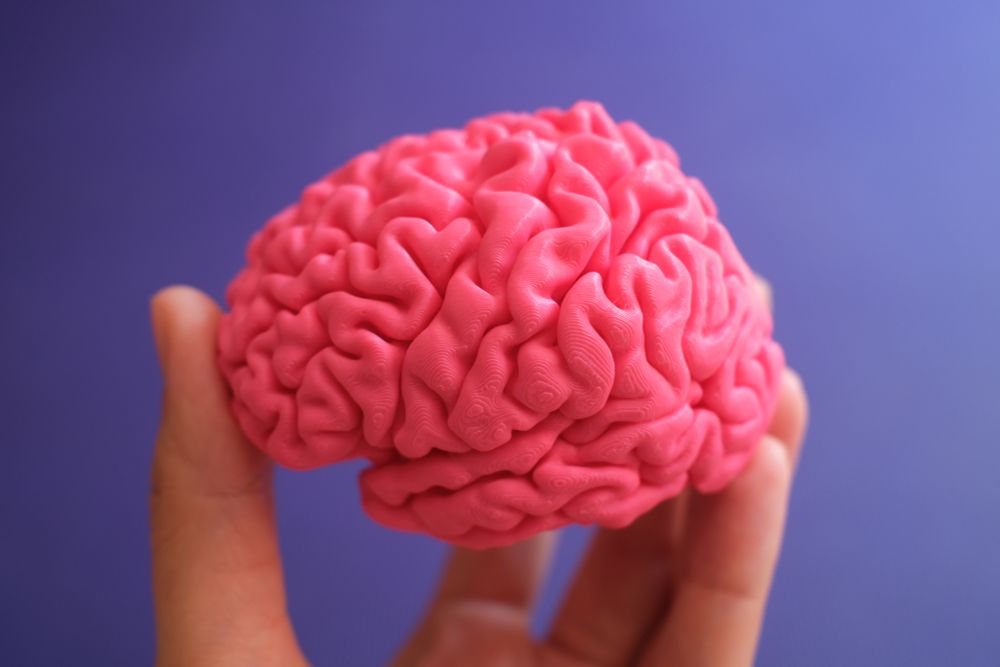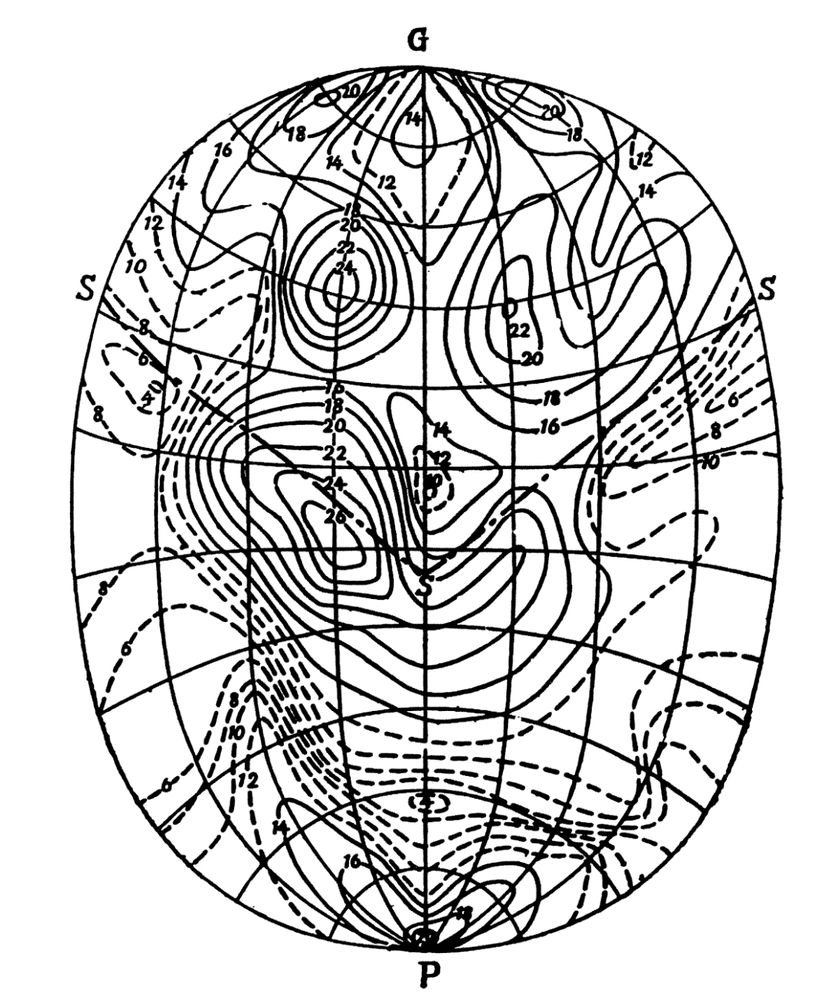
Natalie Schaworonkow
@nschawor.bsky.social
investigating electric waves in the brain,
thinking about visualization, interfaces,
art & beauty with computers.
nschawor.github.io
Frankfurt am Main, Germany
thinking about visualization, interfaces,
art & beauty with computers.
nschawor.github.io
Frankfurt am Main, Germany
Pinned
brain activation maps, but make it real world 🙂🧠
Reposted by Natalie Schaworonkow
New preprint out! In this opinion paper, we review our recent work showing that frontal beta frequency shifts signal categorical decisions. We propose that the observed frequency modulations emerge from the recruitment of distinct neural ensembles when different (categorical) decisions are made.

Beta frequency shifts in decision making: Spectral fingerprints or communication channels?
Recent evidence suggests that beta-band activity plays a key role in decision-making. Here we review our recent work in humans and non-human primates showing that beta-band frequency shifts in frontal...
arxiv.org
November 6, 2025 at 6:08 PM
New preprint out! In this opinion paper, we review our recent work showing that frontal beta frequency shifts signal categorical decisions. We propose that the observed frequency modulations emerge from the recruitment of distinct neural ensembles when different (categorical) decisions are made.
auditory tau-rhythm with a cool waveform, oscillating at 10 Hz, recorded with intracranial electrodes. 🧠〰️🙂

November 6, 2025 at 1:29 PM
auditory tau-rhythm with a cool waveform, oscillating at 10 Hz, recorded with intracranial electrodes. 🧠〰️🙂
our lab alumni list is full of incredible people! poeppel-lab.github.io/alumni
November 5, 2025 at 8:17 AM
our lab alumni list is full of incredible people! poeppel-lab.github.io/alumni
thank you for listening to my EEG TED talk! (the vibes from these chairs 😅).
we ran a MNE-python tutorial for >100 people for a week. the program going from preprocessing to source estimation to group analysis was ambitious, but I hope seeing all the steps involved was helpful for participants. 🙂
we ran a MNE-python tutorial for >100 people for a week. the program going from preprocessing to source estimation to group analysis was ambitious, but I hope seeing all the steps involved was helpful for participants. 🙂
this week at #PracticalMEEG2025 in Aix!
having run an MEG pipeline by trial and error, I was doubting myself between all parameters. lectures on the analysis steps + hands-on application together were very helpful!
& seeing women on stage sharing what they're excited about just hits different ⭐️
having run an MEG pipeline by trial and error, I was doubting myself between all parameters. lectures on the analysis steps + hands-on application together were very helpful!
& seeing women on stage sharing what they're excited about just hits different ⭐️


November 3, 2025 at 7:23 AM
thank you for listening to my EEG TED talk! (the vibes from these chairs 😅).
we ran a MNE-python tutorial for >100 people for a week. the program going from preprocessing to source estimation to group analysis was ambitious, but I hope seeing all the steps involved was helpful for participants. 🙂
we ran a MNE-python tutorial for >100 people for a week. the program going from preprocessing to source estimation to group analysis was ambitious, but I hope seeing all the steps involved was helpful for participants. 🙂
Reposted by Natalie Schaworonkow
Last week I was being trained as a #MNE-Python TrainEErs at #PracticalMEEG2025 - it was a lot of fun to look behind the scenes and learn how to run a good workshop :) thanks to @cuttingeeg.bsky.social for hosting and Marijn van Vliet and @nschawor.bsky.social for organizing this amazing workshop!

November 2, 2025 at 9:20 AM
Last week I was being trained as a #MNE-Python TrainEErs at #PracticalMEEG2025 - it was a lot of fun to look behind the scenes and learn how to run a good workshop :) thanks to @cuttingeeg.bsky.social for hosting and Marijn van Vliet and @nschawor.bsky.social for organizing this amazing workshop!
learn about advanced electrophysiology-related toolboxes (>20 to choose from) at this online event, in lectures or hands-on tutorials:
📅 Wednesday, October 30th at 2 pm (CET)
cuttingeeg.org/practicalmee...
very cool concept! 🙂 free but registration required.
#PracticalMEEG2025
📅 Wednesday, October 30th at 2 pm (CET)
cuttingeeg.org/practicalmee...
very cool concept! 🙂 free but registration required.
#PracticalMEEG2025
Bouquet | PracticalMEEG2025
cuttingeeg.org
October 24, 2025 at 2:08 PM
learn about advanced electrophysiology-related toolboxes (>20 to choose from) at this online event, in lectures or hands-on tutorials:
📅 Wednesday, October 30th at 2 pm (CET)
cuttingeeg.org/practicalmee...
very cool concept! 🙂 free but registration required.
#PracticalMEEG2025
📅 Wednesday, October 30th at 2 pm (CET)
cuttingeeg.org/practicalmee...
very cool concept! 🙂 free but registration required.
#PracticalMEEG2025
very cool PI + great methods + 💰
#NeuroJobs
#NeuroJobs
S-CCS Lab PhD Position
3+2 year 100% TVL-13 position in '26 - open topic on the intersection of combined EEG-EyeTracking, Statistical Methods, Cognitive Modelling, VR/Mobile EEG, Vision ...
Apply via Max-Planck IMPRS-IS program until 2025-11-16 imprs.is.mpg.de
Read: www.s-ccs.de/philosophy
3+2 year 100% TVL-13 position in '26 - open topic on the intersection of combined EEG-EyeTracking, Statistical Methods, Cognitive Modelling, VR/Mobile EEG, Vision ...
Apply via Max-Planck IMPRS-IS program until 2025-11-16 imprs.is.mpg.de
Read: www.s-ccs.de/philosophy



October 23, 2025 at 4:21 PM
very cool PI + great methods + 💰
#NeuroJobs
#NeuroJobs
I always learned a great deal from simulating data (aka mostly how things don't really work the way they are advertised 🙃).
so I can definitely recommend playing with this toolbox for simulating EEG/MEG sources with desired properties (location, coupling) for connectivity. ⬇️
so I can definitely recommend playing with this toolbox for simulating EEG/MEG sources with desired properties (location, coupling) for connectivity. ⬇️
We (I and @willenjoy.bsky.social) created a toolbox for simulations of EEG/MEG because we needed to simulate data. Our initial aim was to simulate connectivity. For this short clip, I simulated two sources with phase connectivity using our toolbox.
#brainmovie
meegsim.readthedocs.io/en/stable/in...
#brainmovie
meegsim.readthedocs.io/en/stable/in...
October 23, 2025 at 6:43 AM
I always learned a great deal from simulating data (aka mostly how things don't really work the way they are advertised 🙃).
so I can definitely recommend playing with this toolbox for simulating EEG/MEG sources with desired properties (location, coupling) for connectivity. ⬇️
so I can definitely recommend playing with this toolbox for simulating EEG/MEG sources with desired properties (location, coupling) for connectivity. ⬇️
made a mini-game for events: find pairs of matching brains, the Allen mouse brain & a macaque brain are smuggled in to make it easier. meanwhile, we can talk about brain structure, cortical folding, twins, individual differences, & etc. 🙂💗🧠


October 20, 2025 at 2:37 PM
made a mini-game for events: find pairs of matching brains, the Allen mouse brain & a macaque brain are smuggled in to make it easier. meanwhile, we can talk about brain structure, cortical folding, twins, individual differences, & etc. 🙂💗🧠
this looks great! (+ cool plots)
given that alpha rhythm is often decreased in frequency (e.g. 8 Hz instead of 10 Hz) for epileptic patients and this is #iEEG data, I find it tricky to call this theta-activity; but it's also different from classical mu-dynamics (Fig. S4). 🤔
given that alpha rhythm is often decreased in frequency (e.g. 8 Hz instead of 10 Hz) for epileptic patients and this is #iEEG data, I find it tricky to call this theta-activity; but it's also different from classical mu-dynamics (Fig. S4). 🤔
Sensorimotor Theta Oscillations Coordinate Speech Movements https://www.biorxiv.org/content/10.1101/2025.10.09.681482v1
October 17, 2025 at 2:03 PM
this looks great! (+ cool plots)
given that alpha rhythm is often decreased in frequency (e.g. 8 Hz instead of 10 Hz) for epileptic patients and this is #iEEG data, I find it tricky to call this theta-activity; but it's also different from classical mu-dynamics (Fig. S4). 🤔
given that alpha rhythm is often decreased in frequency (e.g. 8 Hz instead of 10 Hz) for epileptic patients and this is #iEEG data, I find it tricky to call this theta-activity; but it's also different from classical mu-dynamics (Fig. S4). 🤔
ok, imagine you have an oscillation that is not symmetric around 0 (small direct current shift) with some amplitude modulation, for instance with 1/f-dynamics.
➡️ then these 1/f-dynamics will show up in low frequency part of spectrum (red); in addition to around oscillation peak (yellow).
➡️ then these 1/f-dynamics will show up in low frequency part of spectrum (red); in addition to around oscillation peak (yellow).
October 16, 2025 at 1:58 PM
ok, imagine you have an oscillation that is not symmetric around 0 (small direct current shift) with some amplitude modulation, for instance with 1/f-dynamics.
➡️ then these 1/f-dynamics will show up in low frequency part of spectrum (red); in addition to around oscillation peak (yellow).
➡️ then these 1/f-dynamics will show up in low frequency part of spectrum (red); in addition to around oscillation peak (yellow).
otherwise I have been mostly watching the color of 3 shapes (iykyk 😬). but lots of cool oscillatory bursts, now we need to look at the data during the annual MEG service.
& already missing the balcony summer!
& already missing the balcony summer!



September 15, 2025 at 3:34 PM
otherwise I have been mostly watching the color of 3 shapes (iykyk 😬). but lots of cool oscillatory bursts, now we need to look at the data during the annual MEG service.
& already missing the balcony summer!
& already missing the balcony summer!
I love baby EEG, so had to check this! here, a dichotomy is drawn between theta & alpha rhythms, but this is tricky. the posterior dominant rhythm emerges in the infant at 3-4 Hz & increases until ~10 Hz in adults. I think there is much evidence that this 'theta' rhythm is the equiv of adult alpha.
In an EEG study spearheaded by Marlena Baldauf, we show that 8-month-old babies’ visual systems resonate at 4Hz (theta rhythm) — unlike adults, who resonate around 10Hz (alpha).
👶🧠 echoes at 4Hz
👩🦰🧠 echoes at ~10Hz
Preprint:
www.biorxiv.org/content/10.1...
👶🧠 echoes at 4Hz
👩🦰🧠 echoes at ~10Hz
Preprint:
www.biorxiv.org/content/10.1...

Infant Brains Tick at 4Hz - Resonance Properties of the Developing Visual System
Neural rhythms of the infant brain are not well understood. Testing the rhythmic properties of the adult visual system with periodic or broadband visual stimulation elicited neural resonance phenomena...
www.biorxiv.org
September 15, 2025 at 2:49 PM
I love baby EEG, so had to check this! here, a dichotomy is drawn between theta & alpha rhythms, but this is tricky. the posterior dominant rhythm emerges in the infant at 3-4 Hz & increases until ~10 Hz in adults. I think there is much evidence that this 'theta' rhythm is the equiv of adult alpha.
back from summer break, back to printing little brains
(& some real work too 🙂)
(& some real work too 🙂)
August 20, 2025 at 10:14 AM
back from summer break, back to printing little brains
(& some real work too 🙂)
(& some real work too 🙂)
I'm giving a talk there in a workshop with a really great topic:
"Same words, different worlds: Conceptual consistency in systems neuroscience" 🙂
& many other fab looking workshops! (some by my cool friends: @matteosaponati.bsky.social @rdgao.bsky.social @j-b-eppler.bsky.social 🌟)
"Same words, different worlds: Conceptual consistency in systems neuroscience" 🙂
& many other fab looking workshops! (some by my cool friends: @matteosaponati.bsky.social @rdgao.bsky.social @j-b-eppler.bsky.social 🌟)
⌛ One week left to submit your poster abstracts and travel grant applications for the #BernsteinConference 2025!
🗓️ Deadline: July 15
All info and submission 👉 bernstein-network.de/bernstein-co...
🗓️ Deadline: July 15
All info and submission 👉 bernstein-network.de/bernstein-co...

July 10, 2025 at 7:14 AM
I'm giving a talk there in a workshop with a really great topic:
"Same words, different worlds: Conceptual consistency in systems neuroscience" 🙂
& many other fab looking workshops! (some by my cool friends: @matteosaponati.bsky.social @rdgao.bsky.social @j-b-eppler.bsky.social 🌟)
"Same words, different worlds: Conceptual consistency in systems neuroscience" 🙂
& many other fab looking workshops! (some by my cool friends: @matteosaponati.bsky.social @rdgao.bsky.social @j-b-eppler.bsky.social 🌟)
a seemingly general electrophysiological phenomenon: once you have to process stimuli, low-frequency rhythms disappear, spectrum becomes flatter & sometimes an increase in broadband gamma activity.
we also found this for visual memory encoding in #iEEG data: doi.org/10.1523/JNEUROSCI.2404-24.2025
we also found this for visual memory encoding in #iEEG data: doi.org/10.1523/JNEUROSCI.2404-24.2025
July 8, 2025 at 2:17 PM
a seemingly general electrophysiological phenomenon: once you have to process stimuli, low-frequency rhythms disappear, spectrum becomes flatter & sometimes an increase in broadband gamma activity.
we also found this for visual memory encoding in #iEEG data: doi.org/10.1523/JNEUROSCI.2404-24.2025
we also found this for visual memory encoding in #iEEG data: doi.org/10.1523/JNEUROSCI.2404-24.2025
read the news about 17yr old Hannah Cairo who found a counterexample to a conjecture from harmonic analysis. love the playful presentation slide style. 🙂💕💚
#VisualizationInspo
#VisualizationInspo

July 8, 2025 at 8:37 AM
read the news about 17yr old Hannah Cairo who found a counterexample to a conjecture from harmonic analysis. love the playful presentation slide style. 🙂💕💚
#VisualizationInspo
#VisualizationInspo
making little mini brains for internal participants (who I can not pay with money) for our current experiment, using the individual structural MRIs.
#ForbiddenBubbleGum 🙃
#ForbiddenBubbleGum 🙃

July 3, 2025 at 12:45 PM
making little mini brains for internal participants (who I can not pay with money) for our current experiment, using the individual structural MRIs.
#ForbiddenBubbleGum 🙃
#ForbiddenBubbleGum 🙃
this figure from 1944 is cited as the first topoplot, from Koiti Motokawa. in an era where only handful of EEG channels across space were used, he measured the mean alpha amplitude for 90 points across the scalp. ❗
(compiling a presentation about the evolution of topoplots, cool stuff out there 🙂)
(compiling a presentation about the evolution of topoplots, cool stuff out there 🙂)

July 1, 2025 at 7:27 PM
this figure from 1944 is cited as the first topoplot, from Koiti Motokawa. in an era where only handful of EEG channels across space were used, he measured the mean alpha amplitude for 90 points across the scalp. ❗
(compiling a presentation about the evolution of topoplots, cool stuff out there 🙂)
(compiling a presentation about the evolution of topoplots, cool stuff out there 🙂)
topoplots or vintage rugs? 🙃🌈

June 30, 2025 at 2:47 PM
topoplots or vintage rugs? 🙃🌈
something curious I noticed when working with this dataset, related to the ease of access for different data components. I am not exactly sure what to do with this observation, but here you have it:
happy that our article about mu & alpha rhythm waveform shape in development is now finally out in the open: doi.org/10.1162/jocn...
oscillation frequency changes across development (one of the most robust findings in the oscillation world). in this work, we also look at waveform shape changes.
oscillation frequency changes across development (one of the most robust findings in the oscillation world). in this work, we also look at waveform shape changes.
June 25, 2025 at 7:30 AM
something curious I noticed when working with this dataset, related to the ease of access for different data components. I am not exactly sure what to do with this observation, but here you have it:
Reposted by Natalie Schaworonkow
E/I-balance as a too simplistic construct, 1/f-exponent reflecting at least 10 different things (some of them definitely non-neural changes) ➡️ a tangled web of spurious correlations 😶🌫️
definitely more additional careful work needed
definitely more additional careful work needed
June 24, 2025 at 7:37 AM
E/I-balance as a too simplistic construct, 1/f-exponent reflecting at least 10 different things (some of them definitely non-neural changes) ➡️ a tangled web of spurious correlations 😶🌫️
definitely more additional careful work needed
definitely more additional careful work needed
happy that our article about mu & alpha rhythm waveform shape in development is now finally out in the open: doi.org/10.1162/jocn...
oscillation frequency changes across development (one of the most robust findings in the oscillation world). in this work, we also look at waveform shape changes.
oscillation frequency changes across development (one of the most robust findings in the oscillation world). in this work, we also look at waveform shape changes.
June 23, 2025 at 3:36 PM
happy that our article about mu & alpha rhythm waveform shape in development is now finally out in the open: doi.org/10.1162/jocn...
oscillation frequency changes across development (one of the most robust findings in the oscillation world). in this work, we also look at waveform shape changes.
oscillation frequency changes across development (one of the most robust findings in the oscillation world). in this work, we also look at waveform shape changes.
I signed up to post this week for @realscientists.de (in German 😬), so let's see how that goes 🙂
[Admin] Rhythmen im Gehirn - Bitte begrüßt Natalie Schaworonkow auf dem Kanal!
realscientistsde.blogspot.com/2025/06/rhyt...
realscientistsde.blogspot.com/2025/06/rhyt...

Rhythmen im Gehirn - Natalie Schaworonkow ist jetzt bei Real Scientists DE!
Diese Woche freuen wir uns auf Natalie Schaworonkow . Natalie (@ nschawor.bsky.social ) hat Kognitionswissenschaften und Computational Neur...
realscientistsde.blogspot.com
June 16, 2025 at 9:29 AM
I signed up to post this week for @realscientists.de (in German 😬), so let's see how that goes 🙂


